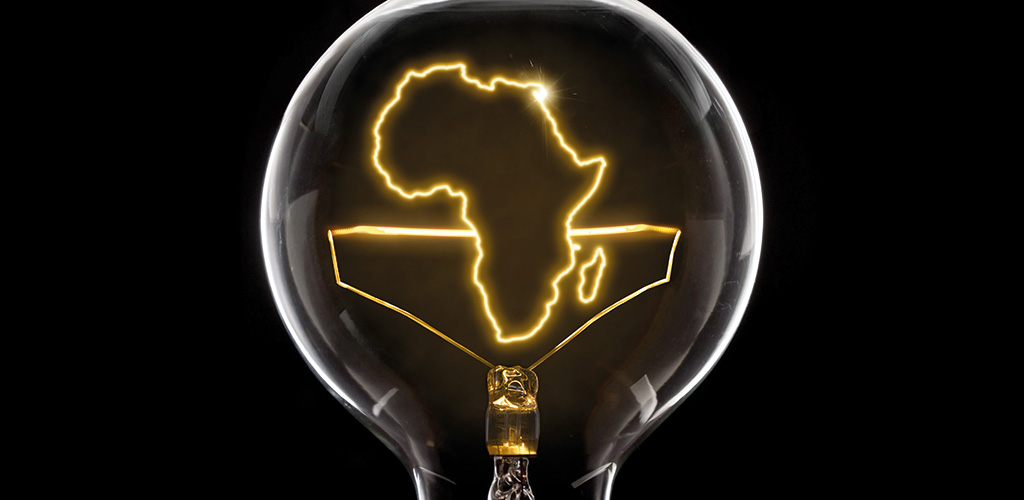Renewables and Fossil Fuels in the Energy Mix

By Liesl Venter
 Africans are planning to do it for themselves; that was the assertive stance taken by African governments and role players at this year’s Africa Oil Week, which returned to the continent after a hiatus of several years.
Africans are planning to do it for themselves; that was the assertive stance taken by African governments and role players at this year’s Africa Oil Week, which returned to the continent after a hiatus of several years.
It’s a position, however, that is already meeting opposition as it speaks to Africa’s intent of no longer being dictated to on the energy transition and its refusal to follow a western energy-transition agenda that African leaders say does not apply to the continent.
“It’s important for us to come together as Africans to discuss and solidify what is best for us among ourselves so that we can move forward,” said Rashid Ali Abdallah, executive director for the African Union (AU) Africa Energy Commission.
While Africa’s new-found voice on how it will approach the energy transition is riling environmentalists and other lobby groups, it’s good news for the project sector – work is on the way.
Highlighting the dire need for energy on the continent amid ongoing calls for countries to transition away from fossil fuels, Dr Amani Abou-Zeid, Commissioner for infrastructure and energy at the AU Commission said now was not the time for African countries “to pick and choose what resources” they were going to use going forward.
She highlighted the dire impact the Covid-19 pandemic had on the continent. “At least 30 more million people have succumbed to energy poverty due to the pandemic. Access to energy in Africa has slowed down since 2020. Now, more than half of the continent does not have access to modern energy, specifically electricity, while close to a billion people don’t have access to clean cooking and rely on elementary means such as coal or wood to make food,” Abou-Zeid said. “Along with this, Africa’s economic growth rates have slowed down. Many of the developmental gains of the past two decades have been lost.”
This, she said, needed to change. Africa needed every weapon in its arsenal to fight the growing energy poverty and expediting energy projects was a priority. “Practically it means that the continent has to utilize all forms of its abundant and untapped energy resources to meet its energy needs. Estimates are that we need to quadruple the current efforts if Africa is to meet its energy goals.”
Considering that the continent at present contributes less than 4 percent to global emissions, ongoing calls to abandon fossil fuels could hardly be applied to Africa, she said. “Even if we use all available resources on this continent, including fossil fuels, to deliver energy to Africans we will still not exceed 3.5 percent of global emissions.” Abou-Zeid said this was a figure worth remembering before anyone started lecturing or preaching to Africa about emissions and what resources it could or could not use.
More Projects Needed
The old adage, when the world sneezes, Africa gets the cold has held true for the past few years. The ongoing pandemic saw many projects being stalled or shelved. Ongoing global economic uncertainty has not helped either.
According to Obo Idornigie, vice president, Sub-Saharan Africa at Welligence Energy Analytic, the project sector has remained slow for longer than expected. “It really has not picked up,” he told Breakbulk. “We are expecting to see more final investment decisions (FIDs) this year than has been the norm overthe past few years. There will, however, not be any big FID announcements anytime soon.”
Logistics operators are, however, slightly more optimistic about the outlook for the sector with talk at the conference that a renewed focus on oil and gas might see projects take off again.
“The logistics sector is well placed to deliver the necessary support and services to the oil and gas sector,” said Howie Frylinck, a project management specialist for Pentagon Freight Services and moderator of a panel discussing what oil and gas could offer economies.
He said oil and gas projects were expected to pick up in the next few years as the continent needs to address its energy crisis sooner rather than later. With over 600 million people in Africa with no access to power, it is also not just oil and gas projects that are needed; so too are more renewables projects – a sector that is increasingly gaining ground in Africa with solar, wind and hydro projects on the increase.
South Africa’s Minister of Mineral Resources and Energy, Gwede Mantashe, said Africa’s stance on the energy transition was not an argument about the reality of climate change, but rather a move to developing hydrocarbons safely with strong carbon management strategies in place. Renewable projects, he said, would increase, but the continent would not just walk away from its resources completely to rely on renewable energy.
According to Simon Flowers, chairman and chief analyst at Wood Mackenzie, supply tightness has been seen around the world. Policies and corporate strategies have restricted oil and gas supply, but demand for oil and gas projects remains.
“The world needs more oil and it needs more gas,” he said. “It also needs effective crisis management skills and a coordinated policy to deliver the energy trilemma – security, affordability and sustainability.”
Gas Gaining Ground
With the major oil companies focused on transitioning their portfolios to gas it is not surprising that this is a sector that is fast gaining traction on the continent.
“The very big projects are still the domain of the big players,” Welligence Energy Analytic’s Idornigie said. “We are seeing them focus more on projects that can be delivered on time, have short cycles and meet the budget. In other words, if the cost is right and the carbon emission footprint low these players are going to be interested.”
He said no discussion around gas could be done without mentioning Mozambique. It is here that TotalEnergies is constructing a US$20 billion onshore liquefied natural gas, or LNG, plant. Situated in the northern province of Cabo Delgado it is expected to have a production capacity of 12.8 million tonnes of LNG per year once completed.
Construction, however, came to a grinding halt when fighters linked to Islamic State led several attacks close to the site in 2021, resulting in TotalEnergies declaring force majeure.
Indications from Mozambican Vice Minister of Mineral Resources and Energy, António Saíde, at the conference, however, is that the project will pick up again early in 2023 when construction is expected to resume.
Other Mozambican projects worth mentioning are Eni’s Coral South project which includes a floating LNG plant and has capacity of around 3.4 million tonnes of LNG per year. Rovuma LNG, meanwhile, will see the construction of two LNG liquefaction trains which will each produce 7.6 million tonnes of LNG per year, he said.
“The reserves in Mozambique are so huge that it does not matter which project one is talking about as they are all important,” said Luca Vignati, Eni upstream director.
With Coral South expected to start production before the end of the year, it currently has all eyes on it. Logistics companies have returned to the north of the country as activity picks up despite the security risks that continue.
Heading West
Mauritania and Senegal are home to a number of projects expected to kick off in 2023. It is here where the US$4.8 billion Greater Tortue Ahmeyim, or GTA, offshore LNG project is being closely watched by experts.
According to project leaders BP and Kosmos Energy, the first gas is targeted for late next year and the first LNG cargo for 2024. With an expected output of 2.5 million tons per annum, it is fast projecting the two countries onto the world stage.
Senegal is also upping its game in the oil sector with its Sangomar project having past the halfway mark recently. Involving some 250 million barrels of recoverable reserves the field contains both oil and gas. It will be the country’s first offshore oil development. A floating production storage and offloading unit will be permanently moored for the project and is expected to have the capacity to process 100,000 barrels of crude oil per day and 130 million standard cubic feet of gas per day.
“The project will need to get a supply base sorted out onshore and is going to need a lot of logistics support,” Idornigie said.
Possibly one of the most exciting projects to look out for are those in the Baleine field in Cote D’Ivoire with the potential estimated at over 2 billion barrels of oil in place and approximately 2.4 trillion cubic feet of associated gas, with potential upside.
Having been significantly fast-tracked, Baleine will be the first net-zero development in Africa and is on track to start in 2023.
Of course, when it comes to oil and gas it would be sacrilege to not write about Angola which continues to hold major project potential. According to Idornigie, the country holds interesting scope for the project sector, especially outside the small brownfield projects with several tangible mid-size projects in the pipeline.
Ongoing discoveries are being made, the latest being the Ndungu prospect which has an estimated 250 million barrels of light oil in place.
In the Republic of the Congo, the Tango floating LNG will begin the activity in the second half of 2023 with a treatment capacity of approximately 3 million standard cubic meters/day and an LNG production capacity of approximately 600,000 tons per year.
According to Eni’s Vignati, the strategy for many of the majors at present is to develop a range of LNG projects. “Such a portfolio can easily be relocated as and when opportunities come up or change,” he said.
East Looking Up
According to Ruth Nankabirwa, Minister of Energy and Mineral Development in Uganda, projects in the East of Africa are also expected to pick up. “We have announced our third oil block licensing round, that will start next year,” she said, indicating that the petroleum sector will be expanded in a bid to grow the economy. The country has confirmed reserves of 6.5 billion barrels of oil, of which at least 2.2 billion are recoverable.
In Tanzania, a long-awaited LNG liquefaction plant is starting to see movement with construction imminent. Considered a mega project, it was an important development for the country, said Kelvin Koba of the Tanzania Petroleum Development Company. With capacity to produce 10 million tons of LNG per year the country expects to see major potential for infrastructure investment including pipelines and natural gas processing plants.
The country has proven gas reserves of 57 trillion cubic feet and several other projects are also on the cards such as the Mazi Bay gas project where drilling exploration is underway, the West Songoshongo project that will see seismic studies start soon, and the Eyasi Wembere project in the eastern part of the country is also gearing up to do its seismic studies, Koba said.
According to Wood Mackenzie’s Flowers, ongoing new discoveries are further feeding into a “healthy pipeline of projects for Africa.”
“The investment is increasingly more diversified across the continent particularly focused on deepwater and LNG. Governments should be motivated to make sure investments come their way now. Streamlining processes to cut bureaucratic red tape, enabling the supply chain and incentivizing investors should be a priority at present,” he said.
Liesl Venter is a transportation journalist based in South Africa. Africa Oil Week is a complementary event to the Breakbulk series, all of which are organized by Hyve.
Credit: Shutterstock
